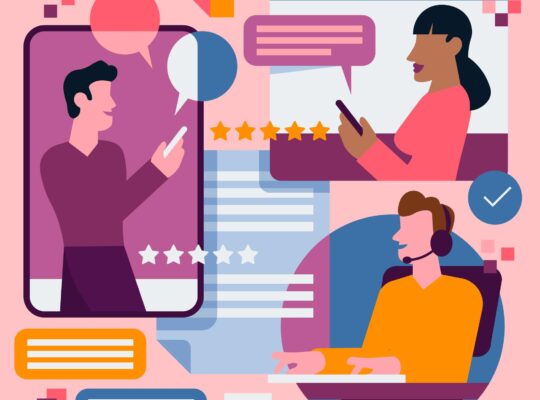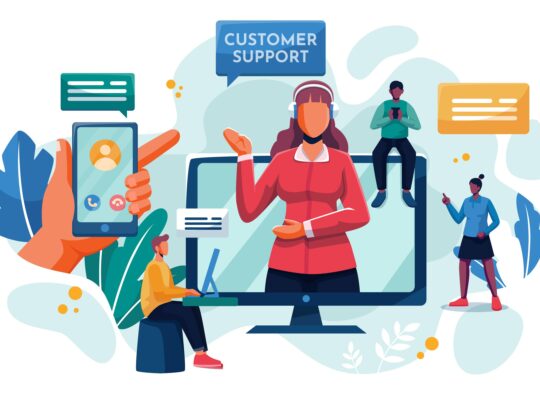| Customer Service Strategy | ||
| Instructor: Brad Cleveland | ||
| Released: 4/8/2024 | Course Details 51m Intermediate | |
| Skills Covered Customer Service Management Business Strategy | Course Link | |
| Professional Certifications and Continuing Education Units (CEUs) N/A | ||
| Given fast-evolving customer expectations, every organization needs an effective customer service strategy to guide operations and decisions. Your service strategy is the bridge between the organization’s vision and mission—and the decisions and actions that happen every day. Join Brad Cleveland in this course and learn how to develop and execute an effective customer service strategy for your organization and team. Learn the steps of the strategic planning process, involving vision, customer access, talent, processes, technology, investments, and innovation. Plus, discover how to put your strategy to work, measure its effectiveness over time, and make updates to keep your strategy current. Learning objectives – What is customer service strategy? – Identifying customer expectations – Strategic planning – Investing in skills, leaders, and technology – Encouraging innovation – Putting the strategy to work Source: LinkedIN Learning | ||
The Importance of Customer Service Strategy
Define a customer service strategy
Strategy
“A plan of action… designed to achieve a major or overall aim” — OxfordReference.com.
Strategy comes from vision (or goals). Kennedy set the vision of reaching the moon and returning safely. The strategy was using the National Aeronautics and Space Administration (NASA) to achieve that vision.
The customer service strategic should support the overall organization strategy and vision.
The role of customer service strategy
Importance of Customer Service Strategy
- Meet evolving customer expectations.
- Leverage the full value of customer service.
- Align decisions and investments.
How Effective Service Creates Values
- Efficiency
- Customer Satisfaction and Loyalty
- Strategic Value
- Provides early notice of problems
- Maintains company reputation
- Finds ways to innovate
Identify customer expectations
10 Expectations Customers Have of Service Interactions (ICMI)
- Be accessible (in the channels I prefer).
- Treat me courteously.
- Be responsive to, and anticipate, what I need and want.
- Do what I ask promptly.
- Provide well-trained and informed employees.
- Tell me what to expect.
- Meet your commitments.
- Do it right the first time.
- Follow up.
- Be socially responsible and ethical.
Tangibles – environment like facilities, appearance of employees, amenities like wifi, water, etc.
Characteristics of an effective customer service strategy
- Action oriented
- Guides every area of the organization
- Creates measurable results
Strategic Planning: Charting a Course
Introduction to the strategic planning process

Establish a shared vision
Vision
Defines the type of service you want your organization to deliver.
How Effective Service Creates Value
- Efficiency
- Customer Satisfaction and Loyalty
- Strategic Value
Strategic Vision May Include:
- Vision statement
- Mission statement
- Set of values
- Overarching principles or standards
Shape the customer access strategy
Customer Access Strategy:
A framework or set of standards, guidelines and processes describing the means by which customers receive or are enabled to access the information, services, and expertise they need.
- Customer segments – summarizes how customers are logically segmented
- Types of interactions – placing orders, customer service, technical support
- Access channels – in-person, phone, text, chat, email
- Hours of operation – self-service 24/7 website
- Objectives for accessibility – how long will customers have to wait?
- Routing – distribute to right place – which group will handle the issue
- Required resources – which system or employee will handle the interaction
- Required information – customer and service information is accessible
- Analysis/improvement – collect information
- Guidelines for new services – overall technology and investment needs.
Strategic Planning: People, Processes, and Technology
Build the right skills, knowledge, and leaders
Considerations
- Hiring and development
- Compensation and incentives
- Structure
- Culture
- Metrics – schedule adherence and quality
Implement operational plans and processes
Considerations
- Understand and acknowledge the importance of processes.
- Identify major processes.
- Resource planning
- Quality management
- Measuring performance
- Customer relationships
- Leveraging customer feedback
- Describe how to keep processes up to date.
Establish enabling technologies
Major Trends in Customer Service Technologies
- Network and cloud
- Omnichannel
- Workforce optimization
- Quality monitoring systems
- Customer relationship systems
- Fulfillment and tracking
- Desktop
- Artificial intelligence (AI)
- Customer technologies
How can technology support and further your customer service vision?
Strategic Planning: Investments and Innovation
Make the required investments
Investment and Budget
- Develop strategy, then define budget
- Make funding decisions in context
- Maximize cross-functional resources
- Focus on business results
Harness innovation
Lenses for Innovation and Alignment
- Metrics
- Net Promoter Score (NPS)
- Customer Effort Score (CES)
- Service Metrics for Customer Service LinkedIN course
- SWOT
- Strengths
- Weaknesses
- Opportunities
- Threats
Putting Strategy to Work
Use strategy to guide decisions and direction
Review your vision and strategy before every meeting. Make your strategy widely available. Use your strategy to focus.
Use your strategy to help guide change and to communicate why AI is necessary.
Gauge the effectiveness of the customer service strategy
Keys to Effective Strategy
- Visibility
- Collaboration
- Customer-focused culture
- Employee engagement
Keep strategy current
- Assign an owner.
- Ensure it is understood.
- Keep it simple and inspiring.
- Use it.
- Introduce it to new employees.
Shape the future
- Identify who should be involved.
- Take the lead, but get input from others.
- Look to complement existing efforts.
- Revisit this course.
- Use your strategy to guide you.
 | Remember! To experience the full benefit of this guide, I highly recommend you watch the full training session. |






